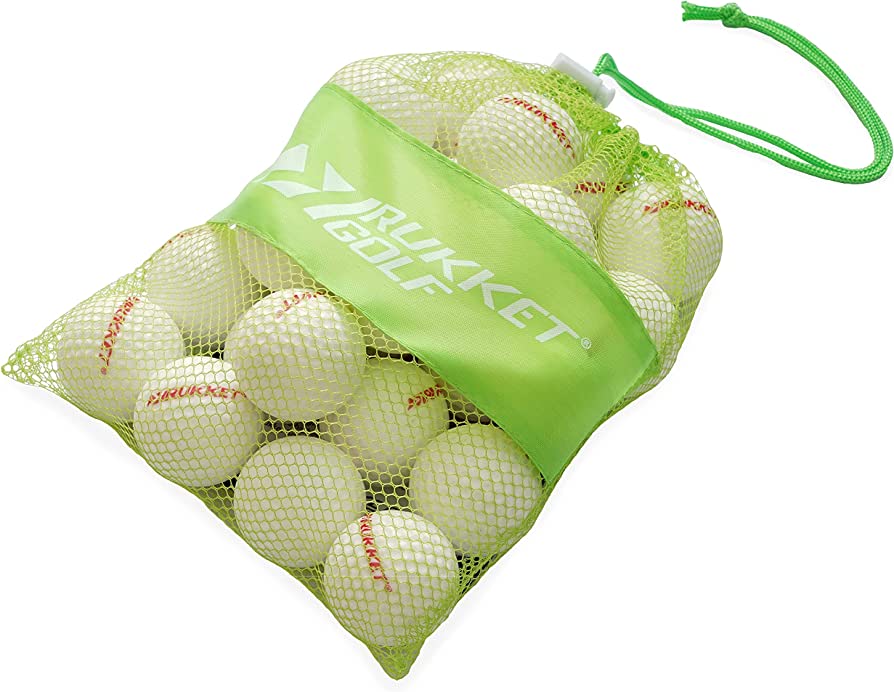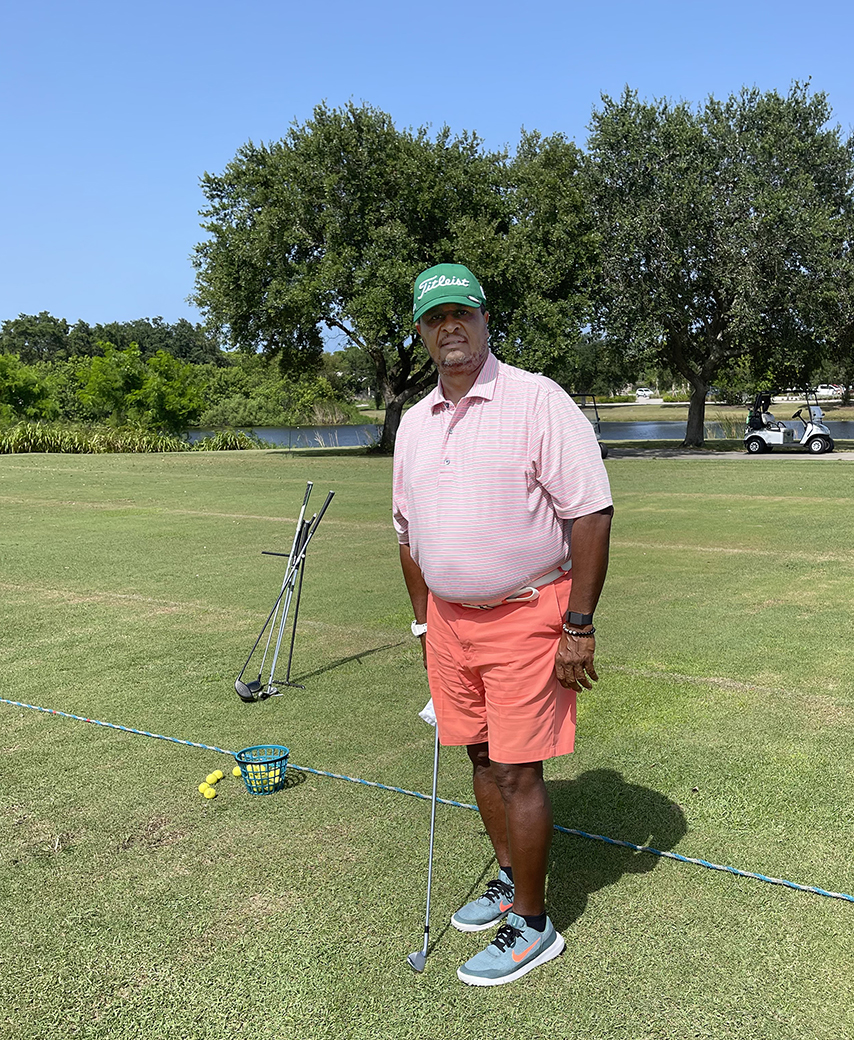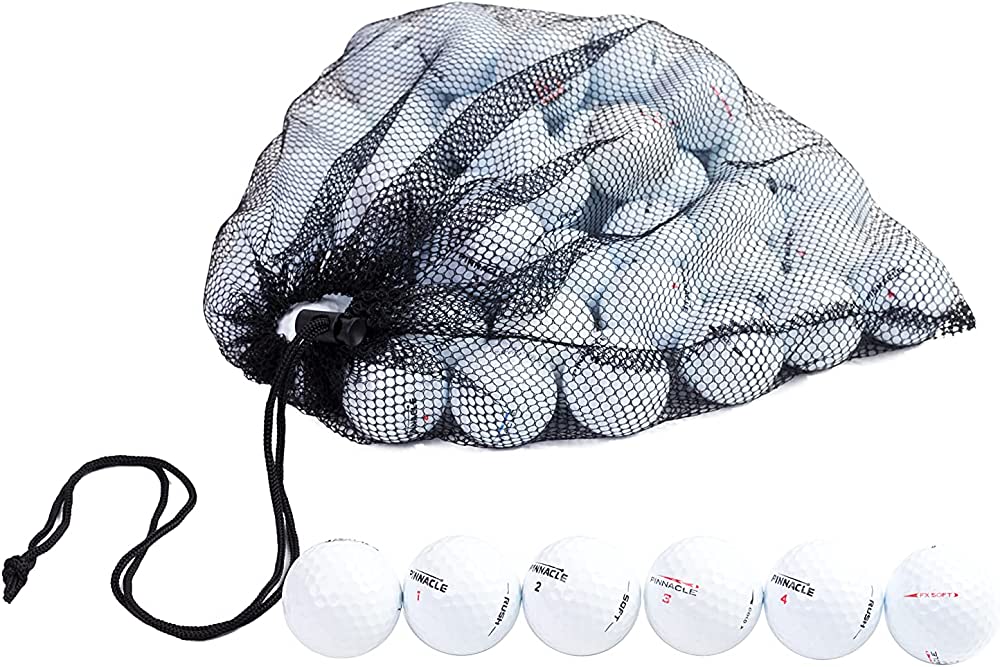Master the Art of Backspin with Iron in Golf
To put a backspin on a golf ball with an iron, strike the ball with a downward motion and take a divot after impact. Now, let’s dive into the details of how to achieve this technique.
When it comes to golf, different players have different preferences for the type of ball flight they want to achieve. Some golfers prefer to hit a shot with a lot of backspin, as it can stop the ball quickly on the green and prevent it from rolling too far.
Backspin can also be useful when hitting a strong headwind, as the ball can stay in the air longer and not be as affected by the wind. To create a backspin with an iron, it’s essential to make clean and crisp contact with the ball while striking it with a descending blow. This technique is commonly called hitting down on the ball. In this article, we will discuss the fundamentals of how to put a backspin on a golf ball with an iron and some tips to help you execute it more consistently.

Credit: www.ebay.com
Understanding The Importance Of Backspin
Trying to master the art of backspin in golf is a skill many amateur golfers would love to acquire. Being able to control the ball’s trajectory in the air and the amount of spin on landing can make all the difference when it comes to success on the course.
We’ll delve into the science behind backspin and how it can affect the distance and control of your shots.
The Science Behind Backspin – A Complete Guide To Golf Ball Flight
Understanding the science behind backspin is an essential step in mastering this technique. Backspin occurs when the ball’s top spins against the air, creating an upward force known as lift. As the ball travels through the air, the amount of lift created by the backspin slows down the rate of descent, allowing the ball to remain in the air for a more extended period.
This effect creates more distance, accuracy and allows the ball to stop quickly when it lands.
To better understand how backspin operates, let’s go over some essential terms used when discussing golf ball flight:
- Launch angle: The angle at which the ball leaves the clubface.
- Spin rate: The number of rotations the ball makes per minute.
- Spin axis: The perpendicular axis around which the ball spins.
How Backspin Affects Distance And Control
The amount of backspin on the ball has a significant influence on the distance it travels and how it behaves when it reaches the ground. Here are some of the ways that backspin impacts golf ball flight:
- Distance – too much backspin will send the ball high into the air, causing it to lose its energy and fall shorter distances. On the other hand, too little backspin will make the ball roll further on the ground but travel less through the air. Finding the right balance between the distance and height required for each shot takes practice and patience.
- Control – backspin is critical in controlling the ball’s landing and how it reacts once it lands. Using an iron shot with a backspin allows the ball to stop quickly or even spin backward, which is particularly useful when playing near the green. It can help avoid rolling or bouncing off the green and into difficult areas, making it a vital aspect of short-game strategy.
Achieving backspin on a golf ball can be challenging. However, once mastered, it is a tool that can transform your golf game entirely. Understanding the science behind backspin and its impact on distance and control is only the beginning. Practicing this technique regularly will lead to a better understanding of how backspin affects your game, ultimately making you a better golfer.
Techniques For Creating Backspin
Proper Technique For Hitting A Downswing
The most critical aspect of creating a backspin is the downswing technique. Here are the key points you should remember:
- Keep your hands in front of the ball and your weight transferred to your front foot.
- Hit down on the ball, making contact on the back of the ball first.
- Follow through in the direction you want your ball to go.
The importance of ball compression – the key to generating backspin
The compression of the golf ball determines the amount of spin produced. Here are the key points you should keep in mind:
- Hitting the ball at a slower speed, with a smooth swing, creates more backspin.
- Use a softer golf ball for more compression and better backspin.
- Choose a club with a higher loft to launch the ball higher and create more backspin.
The Right Set Up For Creating Backspin
Nailing the right setup is equally important to create a backspin. Here are some points to remember:
- Position the ball slightly towards your back foot.
- Open the clubface slightly, pointing it towards your target.
- Place your front foot slightly ahead of your back foot.
- Address the ball with your weight shifted to your front foot.
Creating backspin on a golf ball requires precision and skill, but with the proper technique, correct ball compression, and the right setup, you can easily achieve your desired result. So, use these tips to create some incredible backspin on your next game!
Choosing The Right Iron
Loft Angle And Spin Rate – Understanding The Relationship
When it comes to putting a backspin on a golf ball with an iron, understanding the relationship between loft angle and spin rate is essential. Here are some key points to consider:
- The loft angle of a golf club determines how high the ball will travel.
- The spin rate of a golf ball determines how much backspin the ball will have.
- When you hit a golf shot with more loft, the ball will spin less than when you hit the same shot with less loft.
- The more backspin you put on the ball, the higher it will rise and the more it will stop on the green.
Analyzing The Various Irons And Their Impact On Backspin
Different irons have varying characteristics that impact the amount of backspin you can put on a golf ball. Here is a brief overview of some common types of irons and their impact on backspin:
- Wedges: Wedges have a high loft angle, making them ideal for high shots that result in more backspin.
- Short irons: Short irons typically have lower loft angles than wedges, but they still produce a considerable amount of backspin.
- Mid irons: Mid irons are often used for approach shots to the green, and they produce less backspin than wedges and short irons.
- Long irons: Long irons have the lowest loft angle and produce the least amount of backspin. They are often used for shots that require more distance than height.
How To Choose The Right Iron For Your Swing
Choosing the right iron for your swing can help you produce more backspin on your shots. Here are some tips to help you make the right choice:
- Understand your swing speed: If you swing slower, you may want to choose an iron with more loft to produce more backspin.
- Consider the course conditions: If the greens are soft and receptive, you may not need as much backspin.
- Try different irons: Experiment with different irons to see which ones produce the most backspin for your swing.
- Get fitted for clubs: Getting fitted for golf clubs can help you identify the right shaft length, lie angle, and flex for your swing.
Now that you understand the relationship between loft angle and spin rate, can analyze the impact of different irons on backspin, and know how to choose the right iron for your swing, it’s time to head to the range and start practicing.
Remember, your swing is unique to you, so don’t be afraid to experiment until you find the perfect combination of club and swing to put that much-needed backspin on your shots. Happy golfing!
Perfecting Your Shot
Many golfers strive to create backspin on their shots, particularly with irons. Backspin can help the ball stop quickly on the green, preventing it from rolling too far away from the pin. It’s a tricky skill that takes time and practice to master.
We’ll discuss the best ways to perfect your shot and create that coveted backspin.
The Importance Of Practice In Creating Backspin
Like any other skill, creating a backspin requires practice, patience, and perseverance. Here are some tips to keep in mind:
- Start with short shots: Begin practicing with short iron shots from close distances to develop a feel for the swing and the ball’s trajectory.
- Gradually increase distance: As you become comfortable with the swing, increase the distance gradually to see how the shot reacts.
- Use a consistent swing: A consistent swing is essential to creating a backspin. Get into a comfortable and repeatable swing that works best for you.
- Experiment with different clubs: Try different irons to see which one gives you the best spin rate.
- Practice, practice, practice: Practicing regularly is the best way to master the skill, so get out to the range and hit lots of balls.
Making Consistent Contact With The Ball
Consistent contact with the ball is key to creating a backspin. Here are some tips to help:
- Aim for the center of the ball: Striking the ball in the center will give you the most control over where the ball goes and how much spin it generates.
- Sweep the ball: Instead of hitting down on the ball, try to sweep it off the turf to get more backspin.
- Keep your hands ahead of the clubhead: When setting up to hit the ball, make sure your hands are slightly ahead of the clubhead. This helps to create a steeper angle of attack, which can increase spin.
- Keep a shallow angle of attack: To create a backspin, try to hit the ball with a more shallow angle of attack. This means that the clubhead should be moving parallel to the ground at impact.
- Focus on your follow-through: A good follow-through is critical to creating a backspin. Make sure you’re extending your arms fully and finishing with your weight on your front foot.
Troubleshooting Common Errors In Creating Backspin
Despite your best efforts, you still might be struggling to create a backspin. Here are some mistakes you might be making and how to fix them:
- Hitting the ball too hard: If the ball is traveling too far, it may mean you’re hitting the ball too hard and need to dial back the power.
- Hitting down on the ball: If you find your shots are skimming along the ground instead of creating a backspin, you may be hitting down on the ball too much. Try a sweeping motion instead.
- Not enough wrist action: Wrist action is an essential component of creating a backspin. Make sure you’re cocking your wrists on the way back and uncocking them at impact.
- Not hitting the ball in the center: Hitting the ball off-center can cause it to veer off and not generate any spin. Aim for the center of the ball and make sure your swing is consistent.
Creating a backspin on a golf ball with an iron is a technique that takes time and practice to master. By focusing on your swing, consistent ball contact, and troubleshooting mistakes, you’ll be well on your way to creating that coveted backspin.
So, get out on the range and start practicing!
Playing Environment And Additional Considerations
Creating A Pitch Shot – Perfect For Generating Backspin
Creating a pitch shot is an excellent technique to generate a backspin on a golf ball. Here are some steps on how to create a pitch shot:
- Set your stance a little closer than a full swing.
- Position the ball a little behind the center of your stance.
- Position your weight on the forward foot – the left foot for right-hand golfers and the right foot for left-hand golfers.
- Open the clubface a little bit.
- Swing the club on an inside-outside path.
- Hit down on the ball for crisp contact.
Tips For Playing On Wet Or Soft Courses
When you are playing on a wet or soft course, it is important to alter your play to generate maximum backspin and control. Here are some tips:
- Use high-lobbed wedges to avoid digging into the ground when you hit.
- Take a shorter backswing with stabler footing than usual to maintain contact with the ground.
- Adjust to a firmer grip and maintain solid contact with the club head.
- Hit a little harder with more club speed than you would typically.
- Consider playing a low spinning ball by using a 2-piece ball over the softer 3- or 4-piece ball.
Playing In The Wind – Techniques For Adjusting Your Shot For Max Backspin And Control
When playing in the wind, mastering the technique to generate backspin and control is crucial to hit your shot effectively. Here are some tips:
- Tee the ball lower and come down on it a bit harder.
- Use a more massive clubface to create more backspin, and use a sharper v-groove for maximum backspin.
- Aim mostly into the wind to carry the ball a more extended distance.
- Swing harder if you want to hit it against the wind.
- Use a higher-lofted club or consider hitting a shot with less spin if the wind is blowing directly toward you.
Now that you have a better knowledge of how to generate a backspin on a golf ball with an iron, try out different techniques in various playing environments to master the skill. Happy golfing!
Frequently Asked Questions On How To Put Backspin On A Golf Ball With An Iron
How Do You Put Backspin On A Golf Ball With An Iron?
To add a backspin, strike down on the ball with a steep angle of attack, use a clean clubface, create enough clubhead speed, and hit the ball with a descending blow.
Which Irons Are Best For Putting Backspin On A Golf Ball?
Wedges with higher lofts are the best irons for putting a backspin on a golf ball. The 60-degree lob wedge can produce higher backspin.
At What Point In A Golf Swing Should You Hit For Backspin With An Iron?
The point where you hit the ball on the clubface determines the amount of backspin. Aim for the ball’s center or slightly above it to add a backspin.
Conclusion
Putting a backspin on a golf ball with an iron is a challenging task that takes time, dedication, and patience to master. By following the techniques and tips covered in this article, you can add an exciting dimension to your game and improve your overall performance on the golf course.
However, it’s important to remember that mastering this technique requires practice, and you may not see immediate results. Keep practicing and experimenting with different clubs and ball positions to find the ideal combination that works for you. Most importantly, have fun with the process and enjoy the satisfaction of watching your golf ball spin back toward the pin.
Follow these guidelines, and you can take your golf game to the next level.



